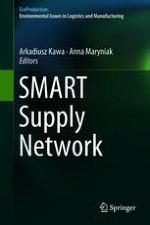2019 | OriginalPaper | Buchkapitel
Blockchain Applications in Supply Chain
verfasst von : Davor Dujak, Domagoj Sajter
Erschienen in: SMART Supply Network
Aktivieren Sie unsere intelligente Suche, um passende Fachinhalte oder Patente zu finden.
Wählen Sie Textabschnitte aus um mit Künstlicher Intelligenz passenden Patente zu finden. powered by
Markieren Sie Textabschnitte, um KI-gestützt weitere passende Inhalte zu finden. powered by
